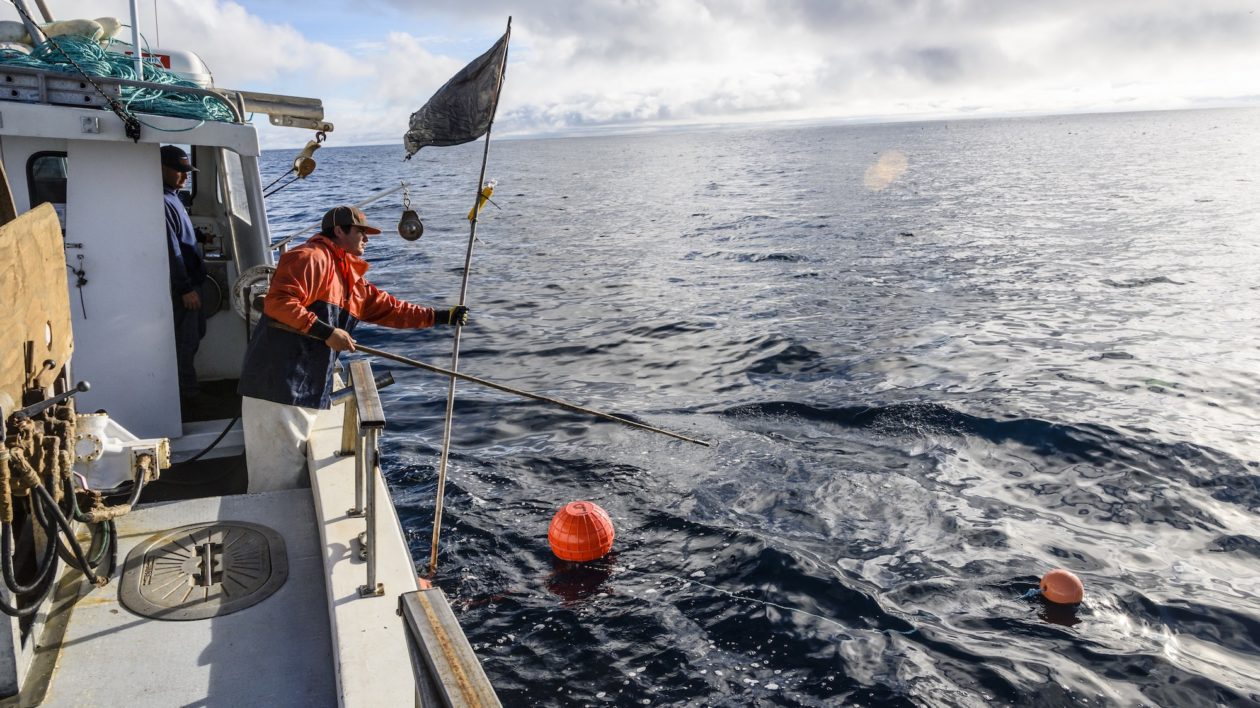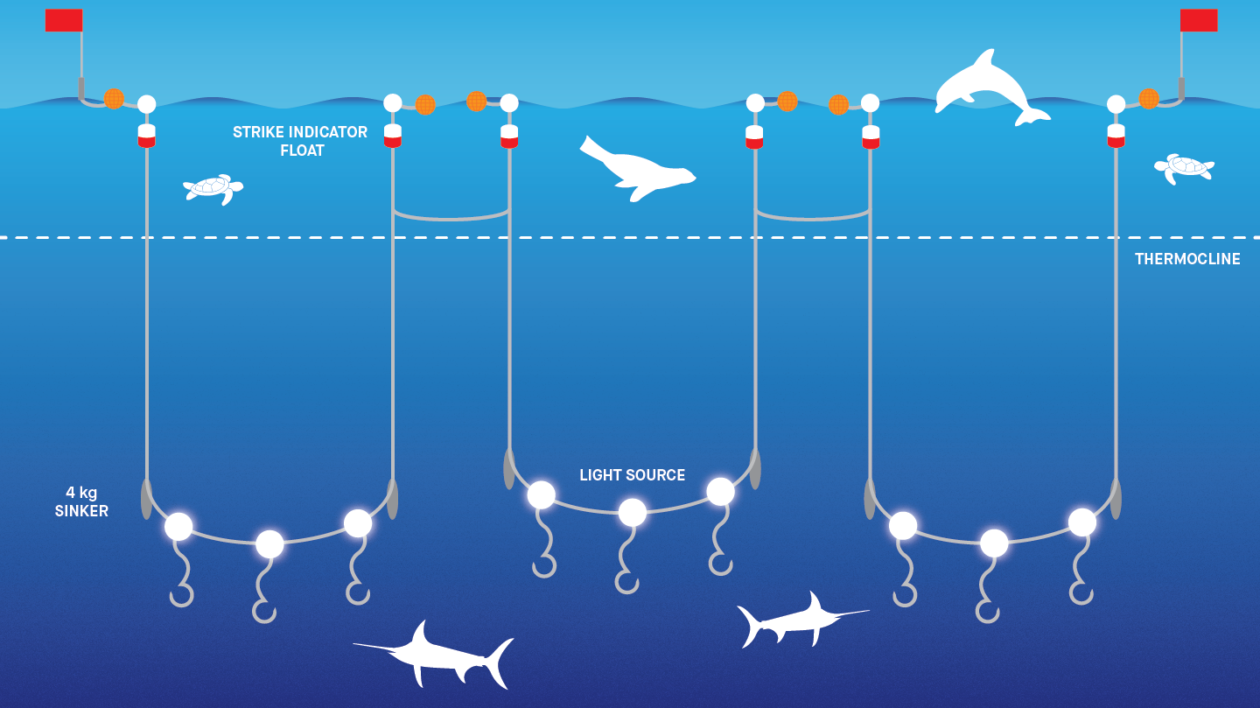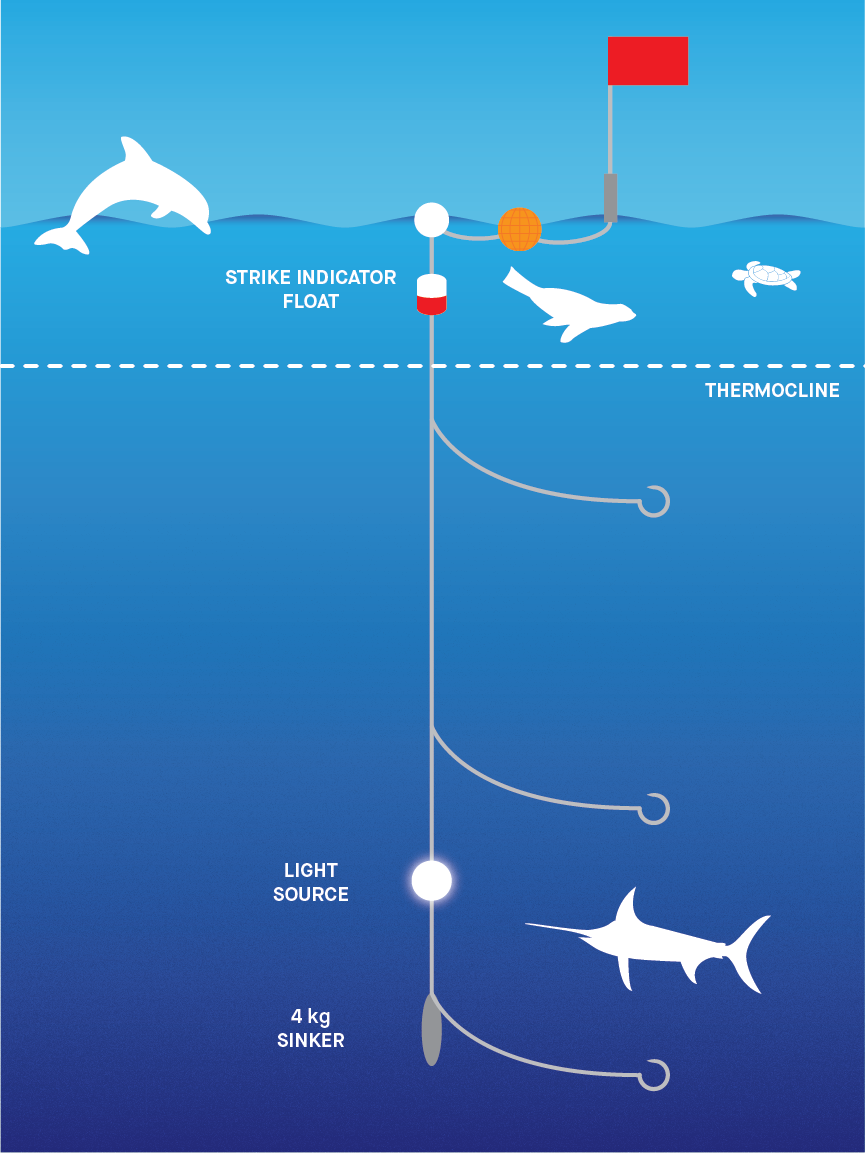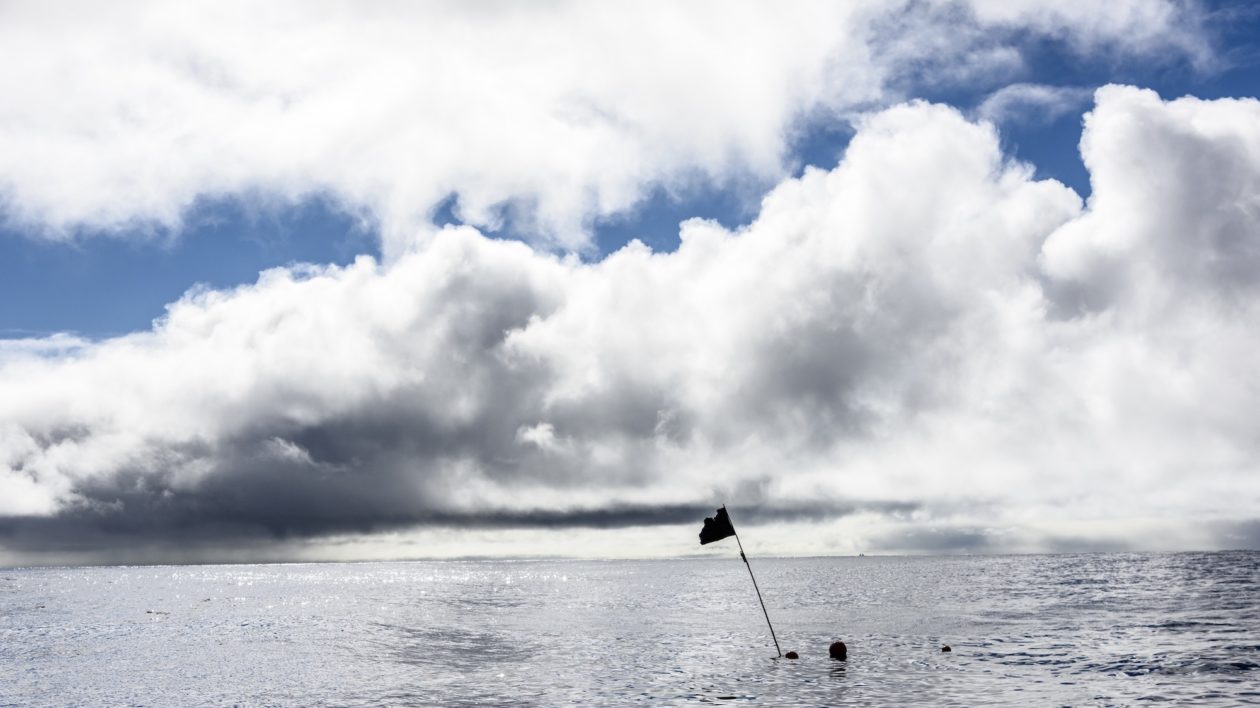Deep below the ocean’s surface, where the light begins to fade, you can find them. Swordfish. Hunting for squid and mackerel in the twilight zone. But farther away an even hungrier predator awaits them—us.
Americans eat almost 20 million pounds of swordfish each year. Unfortunately, fishermen struggle to catch healthy populations of swordfish without harming other sea life like sea turtles, dolphins, and whales. Though the U.S. West Coast swordfish fishery is one of the best managed in the world, fishing gears currently available to California swordfish fishermen still cause some harm to endangered wildlife.
As the demand for swordfish continues to rise, so does the unintended catch of marine life, known as bycatch.
“The Nature Conservancy needed a conservation solution that could tackle bycatch challenges while still providing economic opportunities for sustainable fishing in coastal fishing communities,” said Dr. Alexis Jackson, Fishery Project Director with TNC’s California Oceans Program. Reducing bycatch from fishing is critical to maintaining healthy and thriving oceans. But ensuring healthy ocean ecosystems means trying something new—experimenting with new fishing methods and gears.
TNC’s fisheries practitioners use on-the-water experimentation to explore new conservation and fisheries solutions. As with past experimental fisheries work, TNC started by identifying the right partners. Work began with California swordfish fishermen and a research group specializing in the study of migratory marine fishes and innovative fishing gear–The Pfleger Institute of Environmental Research (PIER).
“The goal is [to develop] gear that only catches what [fishermen] intend to harvest,” said Dr. Chugey Sepulveda, Director and Senior Scientist for PIER. Gear design began by attaching satellite tags to swordfish in an effort to understand how and where these fish were moving. “We found that, during the summer, swordfish spend a lot of time at 700 to 1,200 feet,” Sepulveda said. “These are extreme depths, where there is very little overlap with sensitive species.”

Detailed data showing daily vertical migrations was then used to design a new gear that could catch swordfish at times when they are diving well below species of concern like leatherback sea turtles or humpback whales. This new gear design, called “deep-set buoy gear”, places fishing hooks at ideal depths to catch swordfish using a weighted hook-and-line attached to an array of buoys at the surface. Imagine a super-size version of the hook and bobber you might use to fish a local farm pond, and you’re not too far off. Fishermen actively monitor the buoys, which are designed to indicate when a fish is on the hook. The fishermen can then bring a swordfish onboard immediately or release any unwanted animals alive.
With the help of TNC, PIER ran trials to test the gear with local swordfish fishermen. The results from over 1,300 trials were extremely promising. “We tried it and we started catching swordfish, without catching species we didn’t want to catch,” says Sepulveda.

The results were clear. Fishermen were able to increase the proportion of swordfish caught in a fishing trip while having virtually no bycatch. An added benefit of this gear, compared to conventional fishing gears, was also its economic advantage—swordfish caught using this gear proved to be of higher quality and subsequently more valuable in the marketplace.
Because the fish were caught in deeper, colder waters and processed immediately, the quality of the fish is on average higher than other gears where fish are caught in warmer surface waters. TNC is now conducting a collaborative analysis with PIER and NOAA Fisheries economists to better quantify the expected economic benefits of using the new gear.

Recognizing the environmental and economic merits of deep-set buoy gear, TNC began work to get policy approved that would make the gear available for use by all interested California fishermen. Together with PIER, local fishermen, and a broad array of environmental non-profits, TNC engaged with federal regulators to advocate for the inclusion of sound scientific data in the analyses and policies outlining gear use.
In September 2019 federal managers voted to authorize the gear for use, providing a new tool to fishermen to avoid bycatch and deliver high quality, sustainable swordfish to consumers. Now, fishermen will once again be able to access high value swordfish in productive fishing grounds off California, while protecting biodiversity critical to maintaining healthy ocean ecosystems, a win for people and nature!
Tackling Global Bycatch
Our work in California is only the first step in a global strategy to protect endangered wildlife. Though the California swordfish fishery has taken a big step towards increasing its sustainability, more than 80% of swordfish consumed in America is still imported.
This fish often comes from countries with bycatch rates up to 19 times higher than California’s. “We need more than a California-only solution to really move the conservation needle,” said Jackson.
As a first step in TNC’s efforts to reduce the global bycatch footprint associated with sourcing swordfish, we recently began work in Chile. Chilean swordfish have historically made up almost 10% of what is eaten in the U.S.
Additionally, the need for conservation action is high with a swordfish fleet 30 times the size of that off California and nets three times as large, putting sea turtles and marine mammals at even greater risk. With similar ocean conditions to those off California, Chile was an ideal place to begin.
TNC launched a partnership with local fishermen, Chilean government researchers, and PIER to start expanding the use of this effective, low-bycatch gear. Similar to our work off California, we began by gathering foundational scientific data on the movements of swordfish migrating along the coast of Chile.

Government partners are optimistic that initial research could yield important solutions to reducing bycatch in their local swordfish fleets. Initial tagging results revealed that swordfish are found at shallower depths (500 feet) than off California (700 to 1,200 feet). Although the team is still gathering additional movement data to verify these patterns, we remain optimistic that fishing gear could be modified to target swordfish in Chile while still avoiding marine mammals and turtles.
This spring our team will deploy more tags in Chile alongside our research partners that will provide additional information and guide future gear modifications, while expanding tagging work to Peru.
Demonstrated success in the tagging and eventual gear trials in either country over the next two to three years could open up doors to trial gear solutions in Latin America countries with even higher bycatch levels and swordfish landings.
Partnering with fishermen and academic and government researchers, we are achieving Pacific-wide benefits for coastal fishing communities and protecting the species our ocean ecosystems rely on.




Join the Discussion